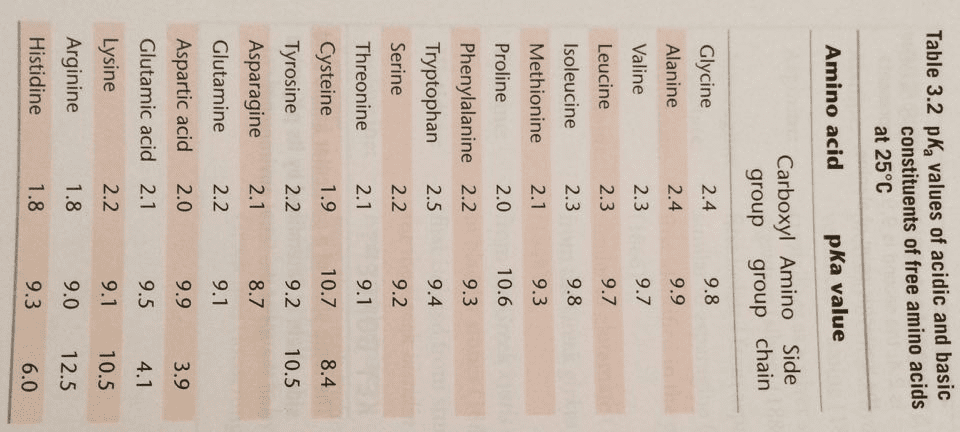BIOC 212 Study Guide - Midterm Guide: Groel, Proteasome, Groes

Compare & Contrast Summary Tables
Amino Acid Interactions
Hydrophobic
interactions
• Carbon chains Alanine, valine, leucine, isoleucine,
proline, phenylalanine, methionine,
tryptophan
• Benzene-OH Tyrosine
• (2 CH2 Glutamine, threonine, lysine, arginine)
Hydrogen Bonds
• 2 rings N Tryptophan (very hydrophobic)
• (+) Basic N Lysine, arginine, histidine
• (-) Acidic COO- Aspartic acid, glutamic acid
• Amide Asparagine, glutamine
• OH Threonine, tyrosine, serine
Van der Waals
interactions
All
Ionic bonds
• Charged ones
• (+) Basic Lysine, arginine, histidine
• (-) Acidic Aspartic acid, glutamic acid,
Disulfide bonds
• (SH) Cysteine
• Can the polypeptide backbone form any of these interactions?
o Hydrogen bonds, Van der Waals
o H bond keeps secondary structures together (NH group)
o Peptide bond itself is polar so cannot form hydrophobic interaction --not a lot
of space where can exclude water
Thought Question
• Different domains recognize post-translational modifications
o What aa in a domain are involved in binding to a phospho-serine
modification?
• + amino acids (Lys, Arg, His)
• How would recognition of a phospho-serine be different from phospho-tyrosine?
o Serine has CH2-OH vs. tyrosine has benzene-OH
o Tyrosine is at lot larger and more hydrophobic, so will have more hydrophobic
aa involved
• Can form hydrophobic interactions through aromatic ring, and OH group
makes it fairly water soluble
• What aa in a domain are likely to recognize acetyl-lysine?
o Acetyl is N-COCH3
o Gets rid of the charge on lysine, so not necessarily have charged aa
interacting
o Would still have H bonding, but do not need a charge
Document Summary
Ionic bonds: charged ones (+) basic lysine, arginine, histidine (-) acidic aspartic acid, glutamic acid, Is there a size limit to polypeptide substrates of groel: yes, around 60kda --largest that can fit inside cavity underneath cap. Attachment of ub: ub attaches onto lysine, so if acetylate or methylate lysine it may affect attachment. Recognition by chaperones: hsp70 recognizes hydrophobic stretch, which amino acid is hydrophobic and can be modified, acetylated lysine a bit more hydrophobic; nuance there. If have polypeptide that does not have a lysine on it --> not ubiquitinated so not degraded. Hsp70: open, no, closed, bind, closed, bind substrate substrate substrate, dnaj (hsp40) Remove adp so atp can bind --open: tprs. Hsp90: closed, bind substrate, closed (tight, remove substrate, open, bind substrate (weak, p23. Groel (one ring: up, no, up, no substrate, down, substrate substrate binding binding (inside) binding, groes. Cap that binds alternatively to top and bottom ring: bind groes bind groes.

